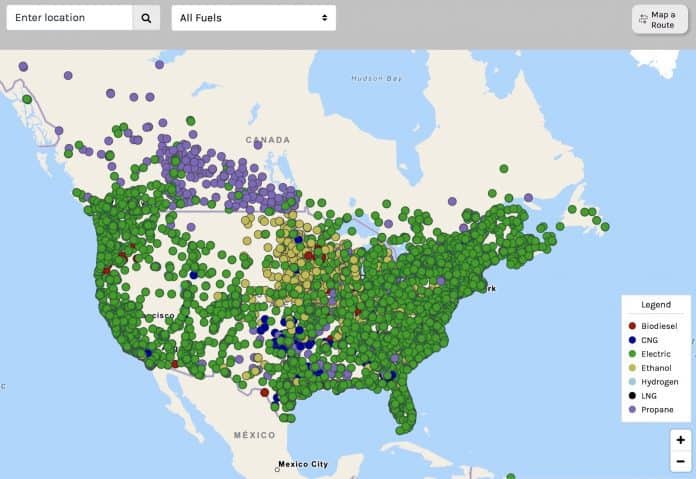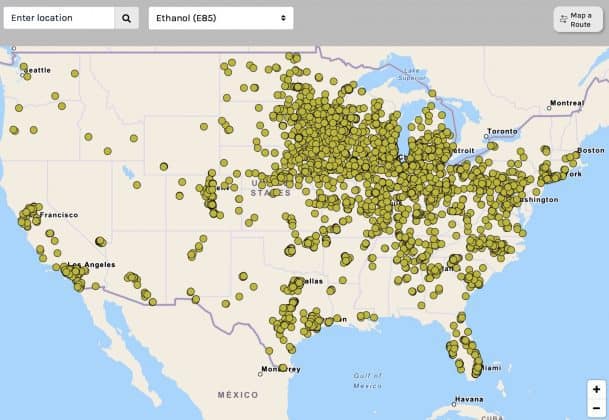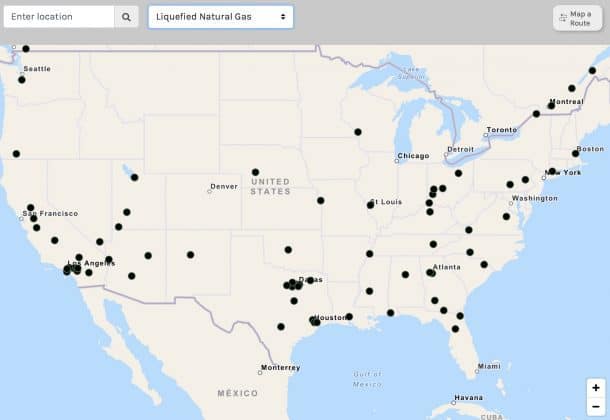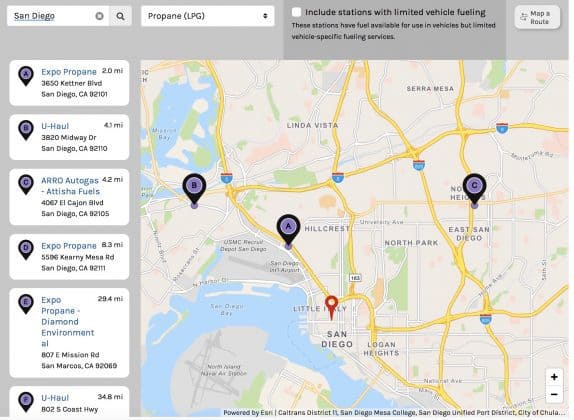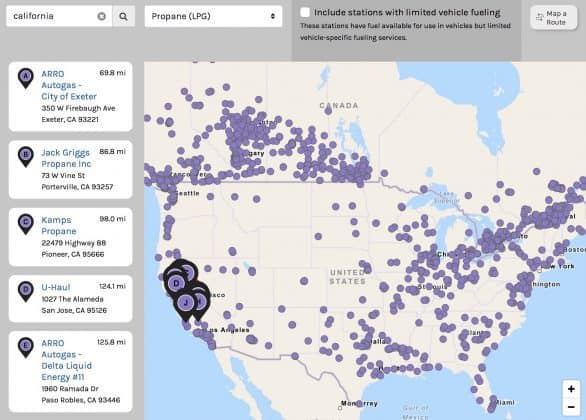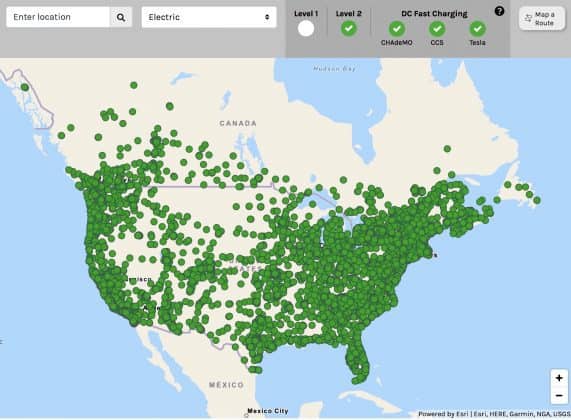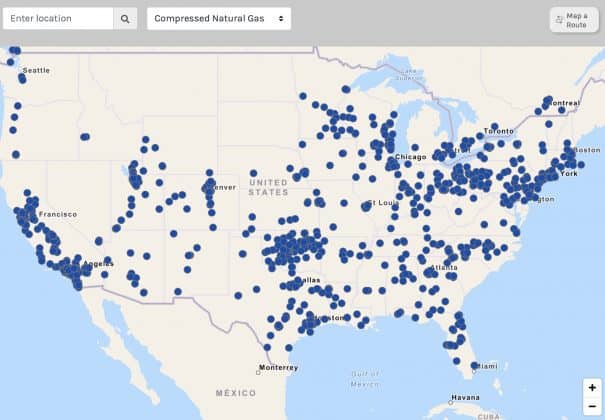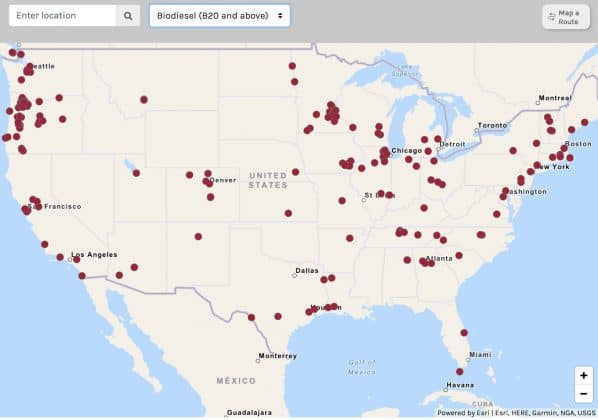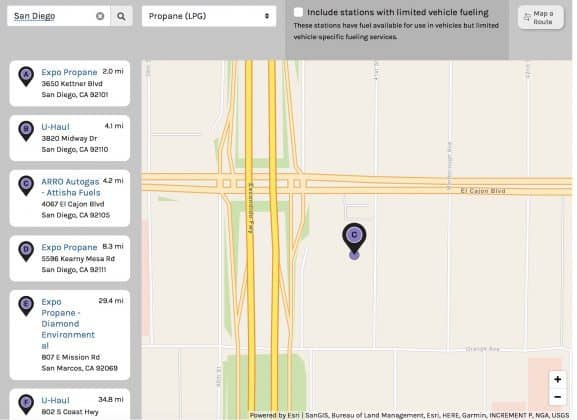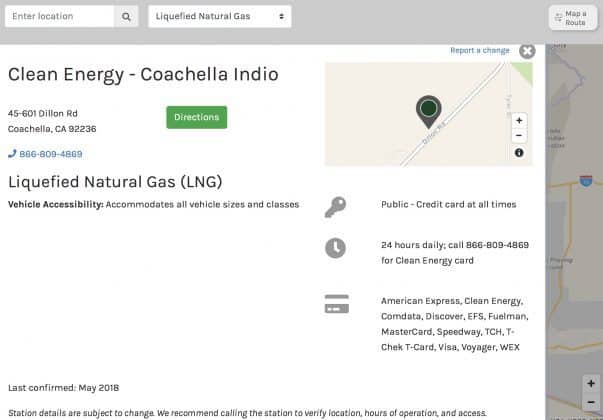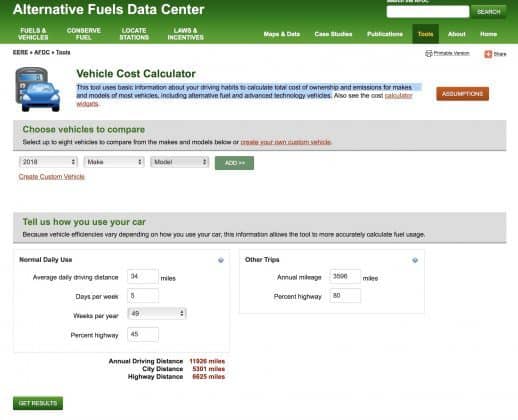Have you ever wanted to find the exact locations of all 30,000 alternative fuel public filling stations in North America—and be able to zero-in on just one particular biodiesel station? Find out now in this next installment in our continuing series of blogs on fuels.
If you haven’t already heard, there is a great website that geolocates almost 30,000 alternative fuel sites on an instantly changeable/searchable world map that can zoom-in, down to a specific street address, or by state. It even does so by fuel category.
When one of your annoying friends says the now-overused phrase, “drill down,” this is precisely the type of website that they likely have in mind. One that easily allows users to split hairs, and split colors of hairs, down to one city block, in any state nationwide.
This is one site that you will definitely want to bookmark and tell your colleagues about: The U.S. Department of Energy Vehicle Technologies Office Alternative Fuels Data Center.
We don’t always give credit where credit is due, but honestly, this is a really helpful resource that was funded with your tax dollars, and mine. It even allows you to map routes and exactly locate where you can refuel or recharge along the way. Plus, it includes background information on each fuel and technology.
The constantly evolving site allows users to submit new locations and address/contact details for 28,917 stations, for these fuels:
- Biodiesel — 198 stations (U.S. only)
- Compressed Natural Gas — 958 stations (U.S. and Canada)
- Electricity — 23,133 stations (U.S. and Canada)
- Ethanol (E85) — 3,290 stations (U.S. only)
- Hydrogen — 35 stations (U.S. only; and only in California)
- Liquified Natural Gas — 79 stations (U.S. only)
- Propane — 1,223 stations (U.S. and Canada)
Not only is the site extremely easy and simple to use (it’s at the same simplicity level as Mapquest or Google Maps), it’s a very valuable resource for researching alt-fuels. It even includes fuel details and seating capacity for 22 school buses.
And, for those fuel-friends who think they have every possible app on the planet, there is a vehicle cost calculator that uses “basic information about your driving habits to calculate the total cost of ownership and emissions for makes and models of most vehicles, including alternative fuel and advanced technology vehicles.”
Also helpful is a download of an Excel spreadsheet of all types of transportation vehicles, for free, that profiles 662 vehicles. It features school buses, transit buses, vans, SUVs, trucks and shuttle buses, with categories for the model year, make, MPG (both highway and city), type of fuel, transmission type, engine size, number of cylinders, number of passengers, number of cylinders, and heavy-duty power system.
All-in-all, if you want to navigate anywhere on the continent and not run out of alt-fuel or electricity along the way, this is a very useful site.



